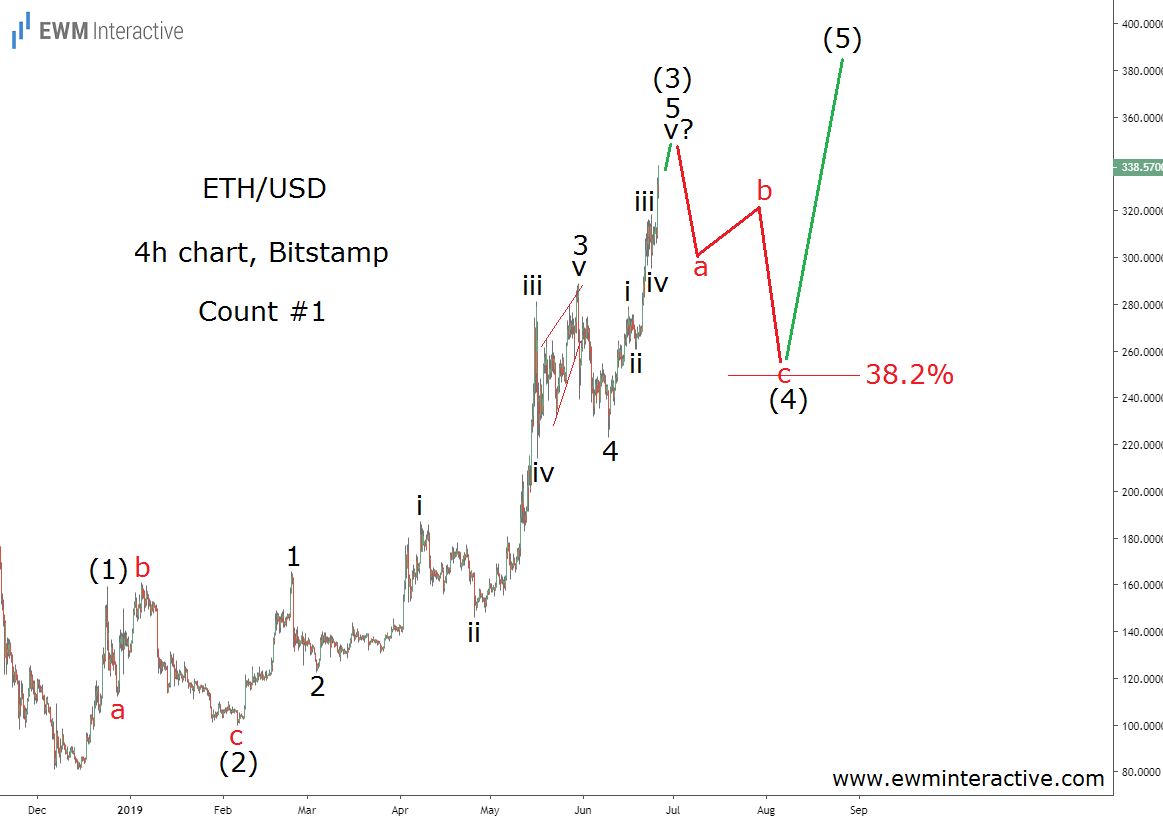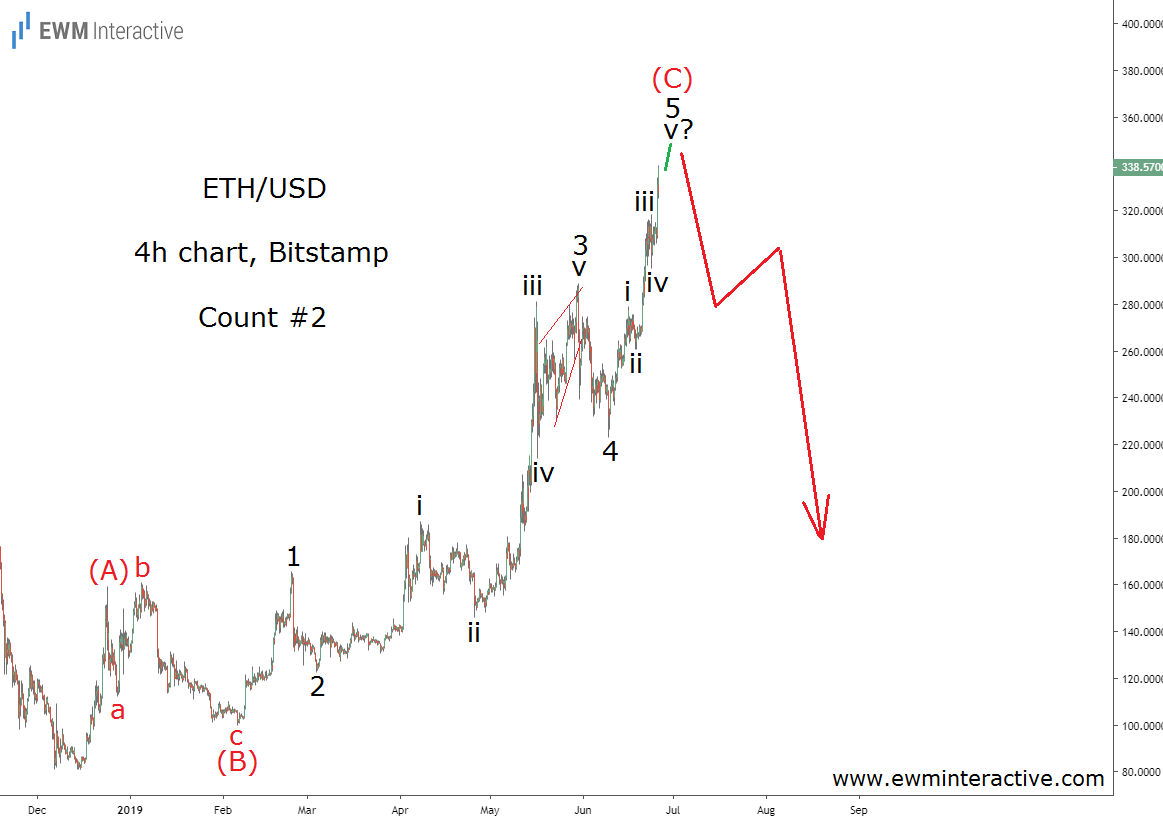Bitcoin has been unstoppable in 2019 and the old “to the moon” chatter is getting louder and louder once again. Ethereum – the second biggest cryptocurrency – has been delivering generous returns since the start of the year, as well.
ETH/USD, currently hovering around $343, is up 325% from its December 2018 low of $80.90. Such impressive gains can make it seem as if making money in the markets is easy. However, experienced traders know that the easy money is the hardest to keep.
Instead of simply extrapolating the recent strength into the future, let’s take a look at Ethereum through the prism of the Elliott Wave principle. The chart below suggests the situation is more complicated than it looks.

Market prices move in repetitive patterns, called waves. Cryptocurrencies, although much more volatile, are no exception. The 4-hour chart above reveals the structure of Ethereum ‘s entire recovery from $80.90. It appears to be a three-wave sequence, labeled (1)-(2)-(3) here, where the sub-waves of wave (3) are also clearly recognizable.
If this count is correct, wave 5 of (3) is almost over. Let’s assume the current surge is going to evolve into a five-wave impulse pattern. We can expect a three-wave pullback in wave (4) to drag ETHUSD to the 38.2% Fibonacci support level near $250. Once there, another rally in wave (5) towards ~$400 would have to complete the pattern.
Ethereum Can Choose a Much More Bearish Alternative
Unfortunately, fifth waves are never guaranteed. The alternative count below shows what happens if the 2019 recovery turns out to be corrective.

It is possible that the 2019 rally is nothing more than a three-wave correction within the larger downtrend. In that case, we will have to relabel the three waves from (1)-(2)-(3) to (A)-(B)-(C), as shown above. According to the theory, once a correction is over the larger trend resumes. For Ethereum this means that if the market picks this scenario, the $250 support area cannot be relied on to stop the bears.
In conclusion, the structure of Ethereum ‘s 2019 rally shows that three waves have already been made. In the Elliott Wave world this calls for at least a partial decline of 25% to 30% to around $250. Traders should then keep both possibilities in mind and leave the tough decisions to the market.
